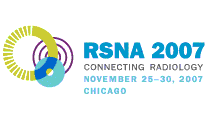
Abstract Archives of the RSNA, 2007
Marc Dewey MD, Presenter: Research grant, General Electric Company (Amersham plc)
Research grant, Bracco ALTANA Pharma GmbH
Research grant, Toshiba Corporation
Speakers Bureau, Toshiba Corporation
Speakers Bureau, Bayer AG (Berlex Inc)
Tania Schink MS, Abstract Co-Author: Nothing to Disclose
Charles Frank Dewey MD, Abstract Co-Author: Nothing to Disclose
Claustrophobia is a common problem during magnetic resonance (MR) examinations that requires anxiolytic sedation of the patient, reduces work-flow, and elevates costs. We compared the rate of claustrophobic reactions on a conventional and a newly-designed MR scanner.
Between 1997 and 2005 a total of 55,734 consecutive patients were included in this study analyzing the rate of claustrophobic reactions on a conventional MR scanner (42,998 patients) and a modern MR scanner (12,736 patients). The modern MR scanner produces 30 dB(A) less acoustic noise (97%) and has a patient-centered design (short (1.6 m) and wide (0.6 m) conical-shaped magnetic bore). Multiple logistic regression analysis was used to adjust for the non-randomized design and to calculate adjusted odds ratios. The study was approved by the State Ethics Committee.
In addition to those undergoing head-first examinations, female and middle-aged patients were significantly more likely to develop claustrophobia in the logistic regression analysis (P < .001). The rate of claustrophobic reactions was significantly lower with the recent MR scanner (0.7%; 95% confidence interval: 0.6, 0.9%) than with the conventional scanner (2.1%; 95% confidence interval: 2.0, 2.3%; P < .001) with an adjusted odds ratio of 3.1 (95% confidence interval: 2.5, 3.9) and a number needed to treat of 72 (95% confidence interval: 63, 85).
Claustrophobia may be reduced by a factor of three from 2.1% to 0.7% when newly designed MR scanners are used.
Magnetic resonance scanners with 97% acoustic noise reduction and a short and wide magnetic bore significantly reduces the rate of claustrophobic reactions by a factor of three.
Dewey, M,
Schink, T,
Dewey, C,
Reduction of Claustrophobia during Magnetic Resonance Imaging: Prospective Cohort Study in over 55,000 Patients. Radiological Society of North America 2007 Scientific Assembly and Annual Meeting, November 25 - November 30, 2007 ,Chicago IL.
http://archive.rsna.org/2007/5001946.html

